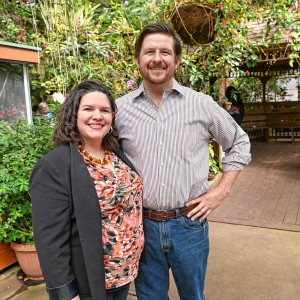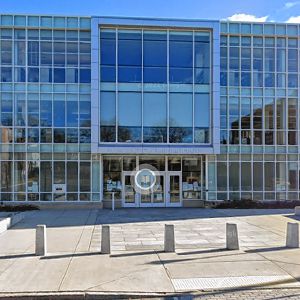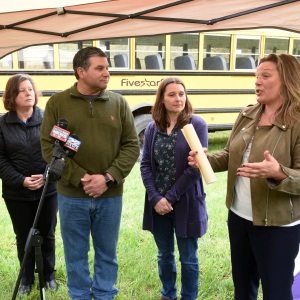Amherst officials float ideas to reduce expenses next fiscal year as deficit looms

The Amherst Town Hall building. STAFF PHOTO/DAN LITTLE
|
Published: 10-05-2024 11:24 AM
Modified: 10-06-2024 10:59 AM |
AMHERST — Reducing or modifying what Amherst spends on its capital improvement program, adjusting the town’s contribution to Other Post Employment Benefits and taking a closer look at the Community Responders for Equity, Safety and Service operations are among suggestions for potential costs savings in the fiscal year 2026 budget.
More than a month before a Nov. 4 financial indicators meeting will inform the Town Council’s financial guidelines for next year’s budgets for the town, elementary and regional schools and Jones Library, members of both the Finance Committee and Budget Coordinating Group are beginning to discuss possible strategies to deal with anticipated deficits.
The conversations begin as the regional schools are seeking a preferred budget of $38.48 million, which would lead Amherst to a required $19.59 million assessment, which is $646,902 beyond the $18.94 million assessment Amherst officials are projecting. That projection is based on a $462,072, or 2.5% increase over this year’s base assessment, and doesn’t include the $355,440 gift from town American Rescue Plan Act money supporting this year’s budget. If the 2.5% increase is established as a guideline, it would apply not only to the regional schools, but to the budgets for the elementary schools, town and library, as well.
At Tuesday’s Finance Committee meeting, At Large Councilor Mandi Jo Hanneke suggested that this prevailing equal apportionment guideline, in which the four main areas all get identical increases, may need to be reexamined. In the current budget year, the town, elementary and regional schools and library all got equal 4% increases.
“Whenever that policy was adopted, our town looks a lot different now, and we’ve had different things come in, we’ve had different governments come in,” Hanneke said.
Hanneke said the town and library haven’t done as well in saying what their needs are and make cuts to meet the budget. There needs to be a better way to understand the hardships across all sectors, like the schools have often done by outlining programs and positions that would be eliminated.
Bernie Kubiak, a member of the Finance Committee, said it is an anomaly how Amherst handles this part of the budget, and officials may have to acknowledge changes need to be made during the budget process.
The current budget spreadsheets show 2.5% increases that would bring the regional schools to $18.94 million, town government to $29.07 million, up $709,085, the elementary schools to $27.64 million, up $674,260, and library support $2.36 million, up $57,552. Other spending includes $8.16 million for capital projects, like roads and buildings, $650,000 going to Other Post Employment Benefits, or OPEB, and additional money for a retirement assessment.
Article continues after...
Yesterday's Most Read Articles
 Northampton Housing Authority boss placed on leave
Northampton Housing Authority boss placed on leave
 NCAA Div. 1 Men’s Ice Hockey: UMass stuns Minnesota 5-4 in OT, advances to regional final
NCAA Div. 1 Men’s Ice Hockey: UMass stuns Minnesota 5-4 in OT, advances to regional final
 UMass Men’s Basketball: Three Minutemen enter transfer portal
UMass Men’s Basketball: Three Minutemen enter transfer portal
 Putting themselves on the line: Activists say nonviolent protests focus attention, inspire others, drive change
Putting themselves on the line: Activists say nonviolent protests focus attention, inspire others, drive change
 Ready to roll on roads: Amherst priority list tees up $4.55M to rebuild some of town’s worst stretches
Ready to roll on roads: Amherst priority list tees up $4.55M to rebuild some of town’s worst stretches
 USDA yanks $3.4M in aid to state food banks
USDA yanks $3.4M in aid to state food banks
All spending together would lead to a $468,784 deficit, which Town Manager Paul Bockelman said is not unusual, especially so early in budget preparation.
Still, there are worries after last Saturday’s four-town meeting. District 1 Councilor Cathy Schoen threw out the idea of freezing staffing at CRESS, which is one program she said is not working well. “What if we went back and reevaluated the basic model?” Schoen said.
Schoen said the town should also consider pulling back on the OPEB, though the town has been trying to increase that by $50,000 each year. The town could also consider reducing the 10.5% set aside of the town’s levy limit for the capital program.
Bockelman said it’s frustrating that school officials have known about the fiscal cliff for many years, even as federal money was disappearing it continued to be applied to their spending. “We knew the regional school budget was supported by one-time money, and there was no plan of action by the school to address it,” Bockelman said.
During the Budget Coordinating Group, which brings together town, school and library officials, mention was made of the extreme pressure on the budget.
At Large Councilor Andy Steinberg said health insurance is rising at a faster pace and the retirement assessment isn’t likely to be as favorable “The budget remains as challenging as it does every year, but moreso because of a couple of factors in there,” Steinberg said.
School Committee member Bridget Hynes said schools have faced 20 years of cuts and 35% reduction in teaching staff since 2003, leading to what she called a “doomed spiral” and “mediocre education and even more people leave our schools.”
Kubiak said the Proposition 2½ was designed to “starve the beast,” but Amherst has so far dodged its worst effects through state aid and careful budgeting.
Some of the focus should be on advocacy to the state around the formula for funding charter schools. That is taking $3.2 million from the Amherst schools.
But Hanneke said she is concerned that blame is always placed on charter schools. “Presumably the implication is our own residents are choosing to send to charter schools, because it harms the rest of the residents in town, is a bad implication,” Henneke said.
“What I hear is how dare you send your children to charter schools?” Hanneke said.
Scott Merzbach can be reached at smerzbaxch@gazettenet.com.






 Hopeful buyers emerge for Magic Wings butterfly conservatory in South Deerfield
Hopeful buyers emerge for Magic Wings butterfly conservatory in South Deerfield Area briefs: Mount Holyoke’s Trailblazers of Color conference; Holyoke Library to host annual mini golf and games; Westfield State launches paramedic program
Area briefs: Mount Holyoke’s Trailblazers of Color conference; Holyoke Library to host annual mini golf and games; Westfield State launches paramedic program  Legislation inspired by a Leverett family allows school bus monitoring systems
Legislation inspired by a Leverett family allows school bus monitoring systems
